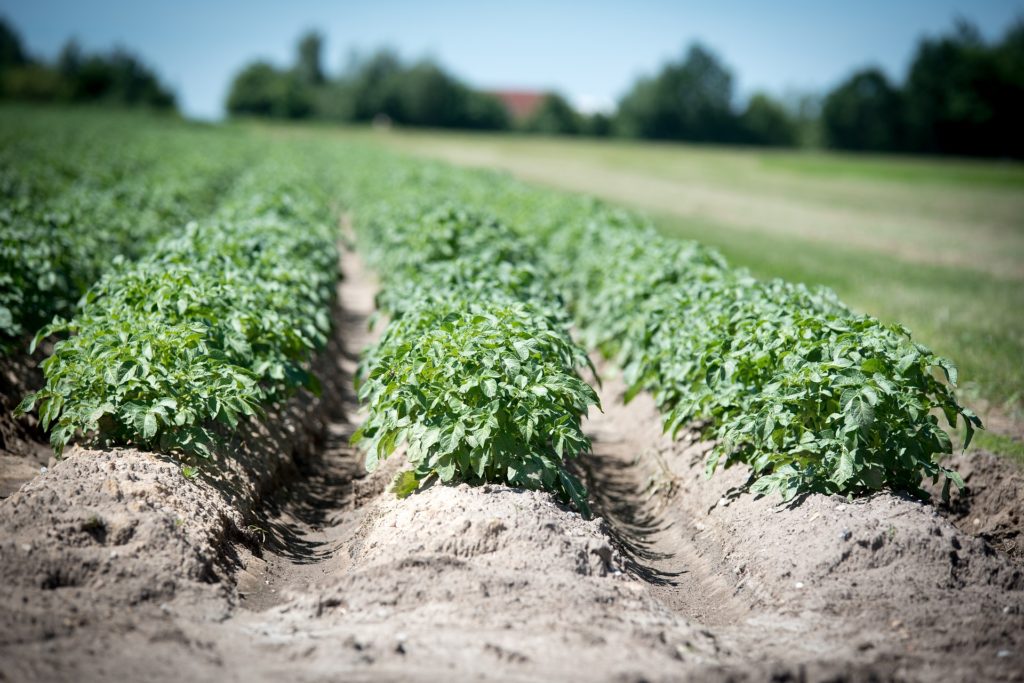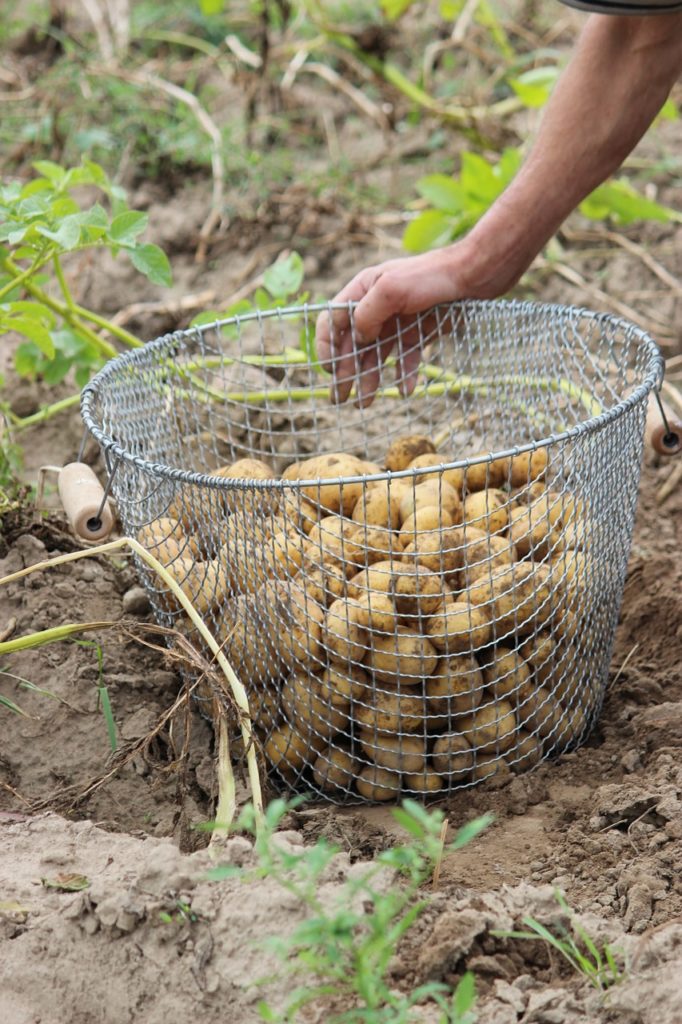 I bet you never thought of the potato as a life saving crop; there is a reason that the humble potato had such an important role in the lives of the Irish, especially before the Irish Potato Famine that occurred between 1845 and 1849. Do you have the determination and the knowledge to raise these vegetables in order to save your family from potential starvation in the event of an economic collapse? We have made potatoes one of our biggest staple crops, because we have experienced just how important they are as a reliable, sustainable source of food.
I bet you never thought of the potato as a life saving crop; there is a reason that the humble potato had such an important role in the lives of the Irish, especially before the Irish Potato Famine that occurred between 1845 and 1849. Do you have the determination and the knowledge to raise these vegetables in order to save your family from potential starvation in the event of an economic collapse? We have made potatoes one of our biggest staple crops, because we have experienced just how important they are as a reliable, sustainable source of food.
Whether you’re a Doomsday prepper or perhaps the furthest thing from it, you know that economic collapse is always a possibility. Throughout history, even the most successful and advanced civilizations and cultures across the world have fallen into very dark, hard times; some of them never recovered.
One of the worst economic disasters of the 1900’s occurred in America nearly 90 years ago, in 1929. Over 15 million people found themselves unemployed by 1933. Is it crazy to say that we’re due for another economic meltdown?

During The Great Depression and the Dust Bowl that consumed Texas, Oklahoma, and other states, there lived a “perfect storm” that left Americans scared, hungry, and homeless. Many families were broken apart, as men failed to provide for their families. They were lucky to find themselves a spot in the local soup lines, which were funded by charities. With the US having a population of only 125.6 million people, 15 million unemployed citizens might not seem like much; but many women and children, a majority of the population, were not in the workforce. Even if working men comprised half of the population, that would mean 1 in every 4 men failed to find work. However, The Great Depression was worse.
Far, far worse.
With the Dust Bowl as Mother Nature’s protest of our unsustainable agricultural methods that were adopted during the early 1900’s, many farmers were forced to leave their farms due to failed crops and unpaid mortgages; significantly reducing the amount of food grown throughout the Midwest. Over 100,000,000 acres went up in dust. This only fueled the hunger and hopelessness of those forced into extreme poverty.

Could Potatoes Be the Answer to Preparing for an Economic Disaster? Could a Yearly Crop Provide a Sense of Security for Families with Children?
Potatoes have long been a pantry staple in impoverished households. They grow easily in small spaces, prefer cooler weather, store well through the winter months, and are rich in carbohydrates, vitamin B-6, potassium, and they offer quite a bit of protein. Potatoes can be prepared in hundreds of ways, with most people enjoying this tuber very much.
But, Can ANY Family in ANY Home Grow Potatoes?
Even if the family in question lives in Suburbia, USA, they can still grow enough potatoes to keep the family fed and safe. As long as the family has a small to average backyard (0.009 acres is all that’s needed; not even 1% of an acre!), they can grow potatoes. Even if there isn’t much of a yard, potatoes thrive in container gardens, too! As long as the tubers are:
- covered with dirt or straw,
- watered regularly,
- provided sunlight and protection from frost,
- Started from disease-free seed potatoes,
- and pests/diseases are kept at bay (use disease free certified seed potatoes),
any family, from the farm owner to the city high rise tenant, can grow an unbelievable amount of potatoes in a small space!
Grow ALL of the Potatoes YOUR Family of 4 Needs for the Year in a 20 FT X 20 FT Bed!
That’s right! In just a 20 foot long and 20 foot wide bed, you can grow 400 potato plants. Considering that the recommended rate of planting for a family of 4 is 40 plants, this small space is TEN TIMES the recommendation. In 400 square feet, this potato bed will absolutely blow your mind.
In this small space, 400 potato plants will grow; most plants will yield between 3 and 5 pounds of potatoes. Some plants may only offer 1 lb of potatoes, while others could offer a whopping 10 pounds with the larger varieties. On average, 400 square feet, or 400 hundred potato plants, could yield between 1,200 lb to 2,000 lb of potatoes, when spaced 12 inches apart. Since this is a bio-intensive bed (rows should be spaced 2 to 3 feet), fertilizer will be required. However, this can come in the form of animal waste or compost!

With the average serving size of 2.4 per pound of potatoes, 1,200 lb of potatoes could yield 2,280 servings while 2,000 lb yields 4,800 servings. With this massive amount of tubers in storage, the family could have between almost 2 servings (1.97) or over 3 servings (3.28) per day, every day! Now, tubers generally don’t last for an entire year, so preservation will be necessary for at least 6 months worth of potatoes.
How Do You Preserve Almost 1,000 Pounds of Potatoes in Bulk!?
Well, in order to preserve THIS many potatoes, it’ll be necessary to invest in a freezer, dehydrator, and large canning jars. Just be sure to never store raw potatoes in the refrigerator!
Potatoes must be pressure canned, as water bath canning is not safe for root vegetables. Canning will be one of the longest lived storage methods. Jars can also be reused time and time again; but lids will need to be replaced with each use, and the seal within the pressure canner needs to be checked with every use as it will eventually need to be replaced.
Freezing can be done in lots of different ways; potatoes can be frozen par-cooked or fully cooked. French fries could be cooked halfway, whole potatoes could be quartered, seasoned, roasted, and frozen, and mashed potatoes could be prepared, frozen in ice cube trays, and placed into a bag. Potatoes freeze VERY well!
If you have a dehydrator, it is an excellent idea to cube the potatoes into small 1/2 inch squares, dehydrate them, and store them for soups and stews. Potatoes could also be blended into a fine powder and stored for instant mashed potatoes. However, it might be better to prepare them as mashed ahead of time (without the milk!) then dehydrate them. They will be easier to grind into a powder, as well. Be sure to dehydrate the potatoes one last time after blending, to remove the last remaining moisture before storing them.
Storing the Emergency Harvest as Tubers
For the potatoes that are not preserved in some way, they will need to be consumed within 6 months generally. Once potatoes begin to sprout, the only way to manage them is to break off the sprouts as soon as they appear. Continuous sprouting will eventually cause the potato to wither away, as it’s mass will be used to produce sprouts. The sprouting potatoes should be consumed first.
Keep the potatoes in a dark, cool location in a place where they can breathe. A shelf lined with newspaper, a laundry basket, or an open wooden crate are great options. Ensure that they are fully dry, as moisture can help to trigger sprouting. Never store your potatoes and onions together either; this could cause trouble when you’re trying to store these root vegetables through the winter. As stated earlier, storing them in the fridge is not a good idea either, unless you are saving seed potatoes. Refrigerated potatoes can be toxic to consume.
